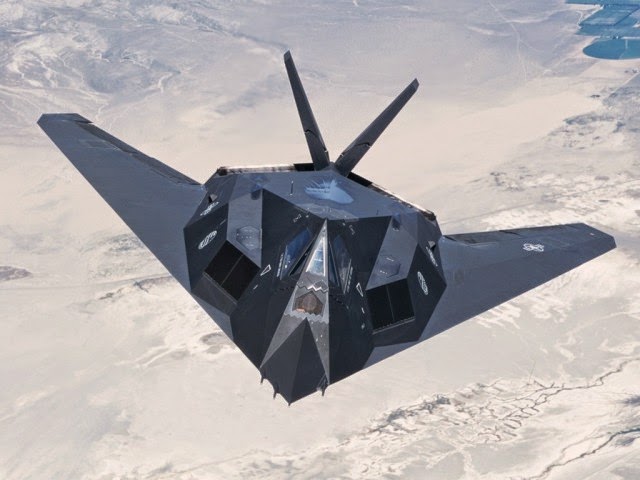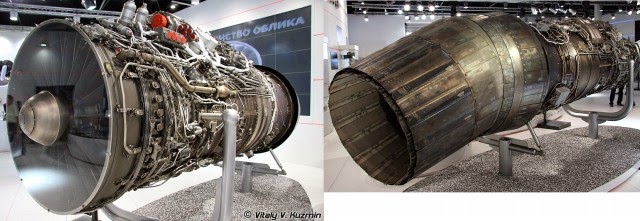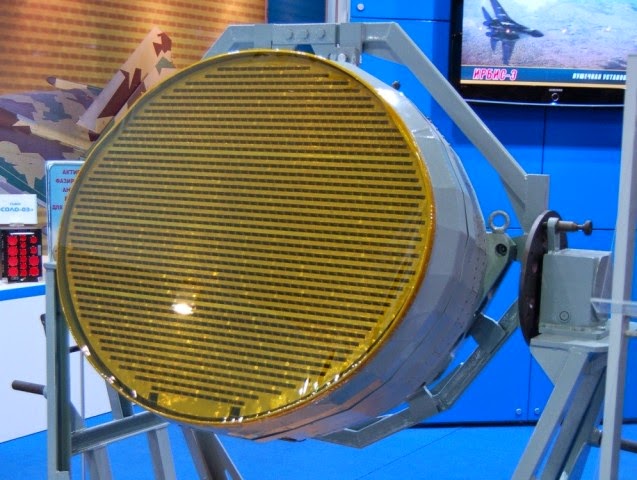The Enigma of the Russian and Indian Air Force
The Enigma of the Russian and Indian Air Force
Aircraft designed to avoid radar detection by reducing radar signature, infrared signature, radio-frequency signals are known as stealth aircraft. Stealth technology is a combination of technologies that greatly reduces the chances of detecting an object using conventional systems. Development of stealth technology is believed to have started in Germany during World War II. Even though these aircraft are imparted with the stealth technology no aircraft is completely invisible to radars, rather these aircraft's are tough to be detected on conventional radar.

The Nazi Germany Horten Ho 229
The Germans designed the Horten Ho 229 aircraft with an intention to avoid radar detection. The Horten was constructed using mixed technologies; the center pod was made from welded steel tubing and wing spars built from wood. The wings of the aircraft were made from two thin, plywood panels which were soaked in a carbon matter which were glued together with a charcoal and sawdust mixture. This design greatly reduced the radar signature of the aircraft. The aircraft design was later tested in US where the results showed the aircraft to be invisible to the Britain's Chain Home early warning radar. By 1970, Lockheed Aircraft started designing stealth technology which was part of the next-gen bombers which were being designed for the US forces.

The Lockheed Martin F 117 Night Hawk
Lockheed F-117 Nighthawk is considered the first purpose designed stealth bomber. The stealth aircraft saw the combat in December 1989 during Operation Just Cause in Panama.
With the western countries inching forward with stealth capable aircraft design the Russian forces were left vulnerable to undetected attacks. To counter this threat the Russian’s constituted the ‘Prospective Airborne Complex of Frontline Aviation’ or the PAK-FA program under which a fifth-generation fighter would be designed to the Russian Air Force. The aircraft would be designed by Sukhoi for the PAK FA programme. The project was code named T-50. T-50 was deigned to be multirole aircraft which could perform both air superiority and ground attack sorties.
The stealth technology is an extremely demanding field and it required technologies which Russia alone could not conquer. The Russian’s inclined towards India which could partner in the project under a co-development clause. Russia and India enjoyed a longstanding and wide-ranging cooperation in the field of defense.
India-Russia military technical cooperation has evolved from a simple buyer - seller framework to one involving joint research, development and production of advanced defense technologies and systems. A deal in this regard was signed between Sukhoi and Hindustan Aeronautics Limited (HAL) to co-develop a Fifth Generation Fighter Aircraft (FGFA) for the Indian Air Force. The FGFA will be produced either as a single-seat or two-seat FGFA and will be witnessing developments in as many as 43 ways from the T-50. IAF is believed to induct around 144 of these single manned FGFA by 2020. There have been plans to produce a naval version of the FGFA but nothing in this regard has been confirmed by the Russian sources.

The Saturn-Lyulka 117S, the power of T-50.
The power plant for the aircraft is the fifth generation Saturn AL-41F turbofan engines The T-50 design employs an interim super cruising and thrust vectoring engine. The first of the T-50’s under production will use the Saturn-Lyulka 117S. 117S are an upgraded product achieved by clubbing AL-31F and improvising the technologies of AL-41F in the system. 117S is believed to produce a thrust of 142 kN with the afterburners engaged and about 87 kN of thrust without the afterburners. The engine is believed to be equipped with circular thrust vectoring nozzles.

The FADEC System
The engine is believed to have incorporated infrared and RCS reduction measures. The engine has full authority digital engine control. The engine is equipped with FADEC (Full Authority Digital Engine Control) which is a system consisting of a digital computer, called an Engine Control Unit (ECU) and also controls other critical aspects linked with the control and functioning of the engines. Employing FADEC in an engine can help it to perform at maximum efficiency under any given condition. FADEC works by receiving multiple input variables of flight conditions and this is analyzed by the ECU. The analyzed data is checked against the set parameters and any changes indicated are returned to the required default value for achieving the appropriate flight conditions. The use of FADEC can greatly increase the efficiency of the engine and can protect the engines against any intolerant manual operations. The workload during flight on the pilot is reduced significantly with most of the critical tasks being completed by the FADEC.
The Circular- and box-nozzle thrust-vectoring configurations have been tested during various test flight. The later T-50 will be out fitted with a more advanced engine which has been code named Izdeliye 30. The Izdeliye 30 will be offering a thrust of about 40000lb. The aircraft can achieve a max speed of about Mach 2 with this power plant. The aircraft can cruise at speeds up to Mach 1.8. The aircraft has a climb rate of about 1200 feet per minute. The aircraft is claimed to have an operational range of about 4590 km. The engines are believed to have a service ceiling of about 65000 fee
The T-50 is equipped with a powerful avionics suite which can be considered as an evolution of the avionics suite which was formally available on the Flanker series. The avionics package on the T-50 will be an upgraded package of the existing Su-35S avionic design. The primary avionics systems on board the T-50 are the Sh121 multifunctional integrated radio electronic system (MIRES) and the 101KS Atoll electro-optical system. The Sh121 is equipped with the N036 Byelka radar system which is an advanced active electronically scanned radar system which was developed by Tikhomirov for the T-50 project.

Byelka X,L Band AESA Radar
The transceiver functions are formed from numerous small solid-state transmit/receive modules. AESA radars function by aiming their beam by emitting separate radio waves from each of the module that finally interfere at an ascertained angle in front of the receiving antenna. The N036 radar system consists of a main nose-mounted X-band AESA radar. The avionics suite also has two N036L-1-01 L-band arrays on the wing's that can be used for friend-or-foe identification. The L-band arrays can also be effectively used for electronic warfare purposes. The N036UVS computer and processor enable the system information to be significantly enhanced. The electronic countermeasures of the aircraft are taken care of by the L402 "Himalayas" systems.
The enhanced computer systems enable the processed data to be transmitted across other platforms which greatly reduces the work pressure on the pilot. The UOMZ 101KS Atoll electro-optical system includes the 101KS-V infrared and track system. IRST system is a method which uses the infrared radiations emitted by objects to detect and track them. IRST gives all-round situation awareness. This system can effectively used for laser aided counter measures against heat seeking missiles. The system involves thermo graphic cameras. These systems are passive which means they do not emit radiations like radars this can help in stealth feature on board an aircraft. The system is integrated on the star board side of the aircraft. This system has been used on Su-27, MiG 29, F-35 lightning, F 18 hornet, Saab, the JF-17 Thunder Block-II, Typhoon and the Rafael. The package also includes the 101KS-U ultraviolet warning sensors and 101KS-N navigation and targeting pods.
T-50 is to be designed with an glass cockpit which is equipped with an 15 inch multi-functional LCD display. The cockpit is also included with Heads up Display (HUD) unit which is a transparent display that presents data on a display unit without requiring the user to look away from his actual viewpoint. The HUD system consists of a projector unit, a combiner, and a video generation computer. The projection unit consists of a Lens and a display unit at the focal area. The combiner is typically an angled flat piece of glass which is usually located in front of the user. Combiners receive an special coating which helps in monochromatic light to be projected on to a projecting unit. The HUDs operate with the help of dual independent redundant computer systems. HUD receives information from various sensors install on the aircraft. HUD’s can be used to display various parameters ranging from target designation, closing velocity with target, Range, weapon seeker and weapon status. The ZSh-10 helmet which is considered as the standard in the platform is equipped with helmet-mounted sight and display unit. The display is formed on aircrew’s visor which can help the crew maintain a situational awareness in critical times without having to take his concentration off the flight. Even the canopy of the aircraft receives a coating for increased stealth element.

PAK FA sensor Suites
The T-50 is provided with the NPP Zvezda K-36D-5 ejection seats have been formerly used on the Mikoyan series. The ejection seat ensures safe ejection of the pilot within Mach 2.5 and can be operated up to 66000 feet. The aircraft life support will enable pilots to perform up to 9-g maneuvers for up to 30 seconds at a go.
The T-50 will be the first aircraft under the Russian Air force to use stealth technology. The airframe of the aircraft is designed with a planform alignment which helps to greatly reduce the radar cross-section. The protruding edges of the aircraft are designed and trimmed out pre designated angles to reduce the reflection of radar waves. The antenna is recessed back into the aircrafts main airframe to maintain the stealth capabilities of the aircraft.
The aircraft is provided with S shaped intake duct the intake is in the upper rear center of the aircraft which is usually present above or below the stabilizer. This S-shaped intake contains most of the compressor outlet of the engine. The T-50 uses Radar Absorbent Material to absorb most of the radar emissions effectively reducing the amount of reflected waves back to the source.
The first known RAM is Sumpf and Schornsteinfeger which was used by Germans to coat the snorkels and periscopes of the submarines. The commonly used RAM to date is the iron ball paint which contains tiny spheres coated with carbonyl iron or ferrite. The F-117A used electrically isolated carbonyl iron balls of specific dimensions suspended in a two-part epoxy paint. Foam absorber, Jaumann absorber, Split-ring resonator absorber and Carbon nanotube are the other known stealth coatings known and in use till date. The weapons bay of the aircraft is concealed in the airframe.
T-50 is designed with an two tandem main internal weapon bays each one approximately about 15 feet in length and about 3 feet wide. The weapons bay of the T-50 is concealed within the main airframe of the aircraft to maintain the stealth capability of the aircraft. Vympel has been put in charge of designing the armament for the aircraft. It is believed to be developing two ejection launchers for the main bays, for the ejection of the missiles from the airframe it is believed o have developed the UVKU-50L system. This system can support missiles of up to 300kg in weight. For deploying the ordinance in mission Vympel is believed to have developed the UVKU-50U which can support ordinance weighing up to 700 kg.

PAK FA with External Weapons
When T-50 is to make non stealth missions it can use its six hard points on the airframe itself. T-50 is equipped with an internally mounted 9A1-4071K 30 mm cannon. T-50 is expected to carry up to four beyond visual range missiles and two short range missiles to effectively take care of air-air threats. T-50 is known to be equipped with K-77M with active radar-homing technology short range missiles. K-74M2 will be the short range missile homed in T-50. For neutralizing long range threats T-50 is being armed with Izdeliye 810 beyond-visual-range missiles.
The main weapons bay of T-50 can home air-to-ground missiles such as the Kh-38M, KA-250, KAB-500 precision guided bombs. T-50 is slated to carry Kh-35UE and the Kh-58UShK anti radiation missiles. The much feared BrahMos supersonic is believed to be installed on T-50 benefiting both Russia and India.
T-50 prototype took wings on 29 January 2010. Till date five prototypes have taken flight and have successfully completed several flights demonstrating the T-50’s capabilities. To date T-50 is believed to be engaged in external weapons trials.
FGFA’s are to enter serial production by 2016. T-50 is to be inducted to the Russian forces by 2017 and to be handed over to India by 2018. India is expected to get the FGFA by 2020. The cost of a single unit is believed to be around US $50 million which is extremely cost effective compared to the American fielded F-22 Raptors.
The aircraft is expected to have a service life of up to 35 years. Once inducted the FGFA’s will be a potent weapon in the arsenals of Russian and Indian forces. FGFA will surely act as an force multiplier and with stealth capabilities these aircrafts can be effectively used in deep penetration bombing runs which will surely help Indian forces in enjoying an upper hand over the Chinese and the Pakistani’s.
Credits to various sources used in this article. All the credits and rights of the photos used in this article are bestowed with the original photographers. It is only because of their dedication and efforts have I been able to bring forward this article.











